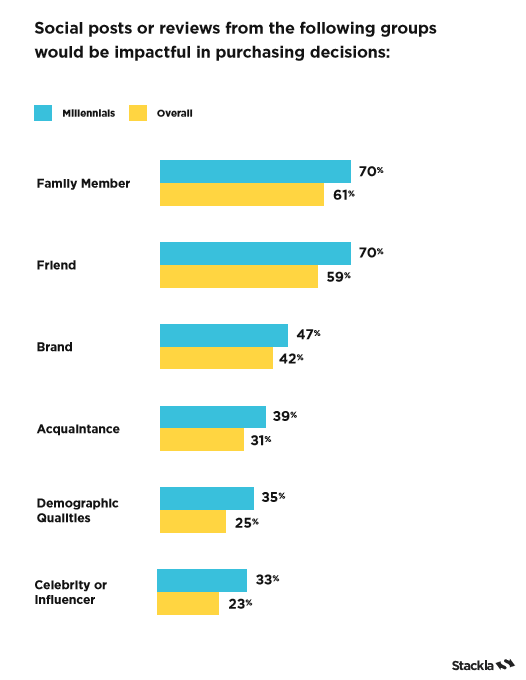Should brands stop ad spending? Survey says yes

Like it or not -- consumer created content has an impact on our purchase decisions -- and successful marketers know how to tap into this content to maximize efficiency across their campaigns.

San Francisco-based social content company Stackla, has surveyed 2,000 online consumers for its Influence in a Digital Age report.
It found that consumers are highly influenced by images, and content that they can relate to.
The report shows that users love user generated content (UGC) -- they do not like influencer advertisements.
In fact, over nine out of ten consumers say authenticity is important when deciding what brands they like and support.
And they think that UGC is much more authentic then content created by brands.
Only two out of ten consumers think that content created by brands is the most authentic -- what a waste of marketing dollars.
Although less than half of consumers said that they thought they could identify UGC, in reality seven out of ten of us can tell whether an image has been created by a brand or an ordinary consumer. Almost six from ten consumers think that most brands do not create authentic content at all.
With a third of millennials are influenced by what they see online -- compared to only six percent of baby boomers -- marketers have a fabulous opportunity to succeed, simply by tapping into this content and gaining reach.
As over two-thirds of consumers (72 percent) post to Facebook at least twice per month and a third post to Instagram, content can easily be propagated. In the US, almost half (42 percent) post six times per month to Facebook according to the report.
Consumers want to post about their good experiences. Almost eight out of ten people (78 percent) said that they would post on social media after a positive experience such as buying a car, or travelling (85 percent).
Only 19 percent say that brand content influences their purchasing decisions. Marketers could tap into these positive experiences and leverage these for their own campaigns.
Pictures of food can flood our feeds -- but they are having a positive affect on our eating habits. Over three quarters of us (76 percent) would post on social media after a positive dining out experience.
And over a third of people (39 percent) of people have decided to eat at a particular restaurant after seeing a social post from a friend.
The abundance of UGC can be a goldmine for marketers who battle to gain traction amongst the noise, and reach people with relevant content that resonates with them.
Sixty percent of people say that UGC is the most authentic form of content and that social content influences their purchasing decisions -- a sure winner for marketers.
With low traction from brand content, marketers would do well to stop ad spending and invest in influencer campaigns instead. UGC content is already out there -- marketers now need to get creative with the content, energise the authentic influencers, and tap into the UGC stream.
Previous and related coverage
Are Instagram influencers cheating advertisers? New tool can identify who to avoid
With fake accounts, likes, and comments flooding Instagram, brands should be more cautious when selecting influencers they plan to work with.
Socially conscious brands have an edge with consumers according to study
Consumers hold the monetary power that brands rely on. But while staying silent may seem like the safer bet, a study has shown that there is more monetary value -- for brands -- in speaking up.
Influencer marketing cuts through noise and drives sales for brands
Across the hyper-competitive retail climate, brands constantly look for ways to drive sales. Influencer marketing could be a key tactic to gain that competitive edge.
What trends will dominate influencer marketing in 2018?
The end of 2017 brings a raft of predictions for 2018, but now that the new year has started, what trends are brands going to use to increase market share?